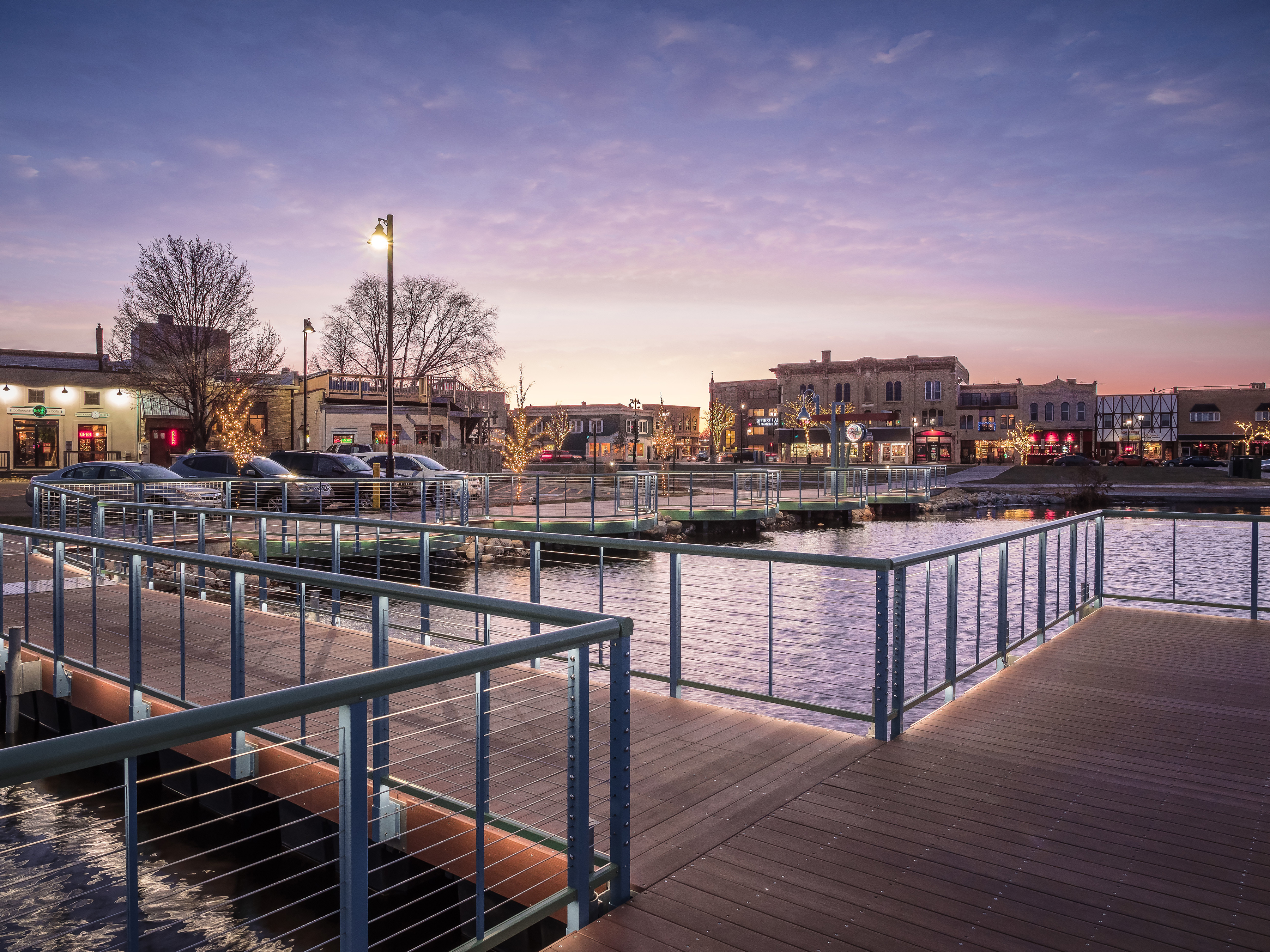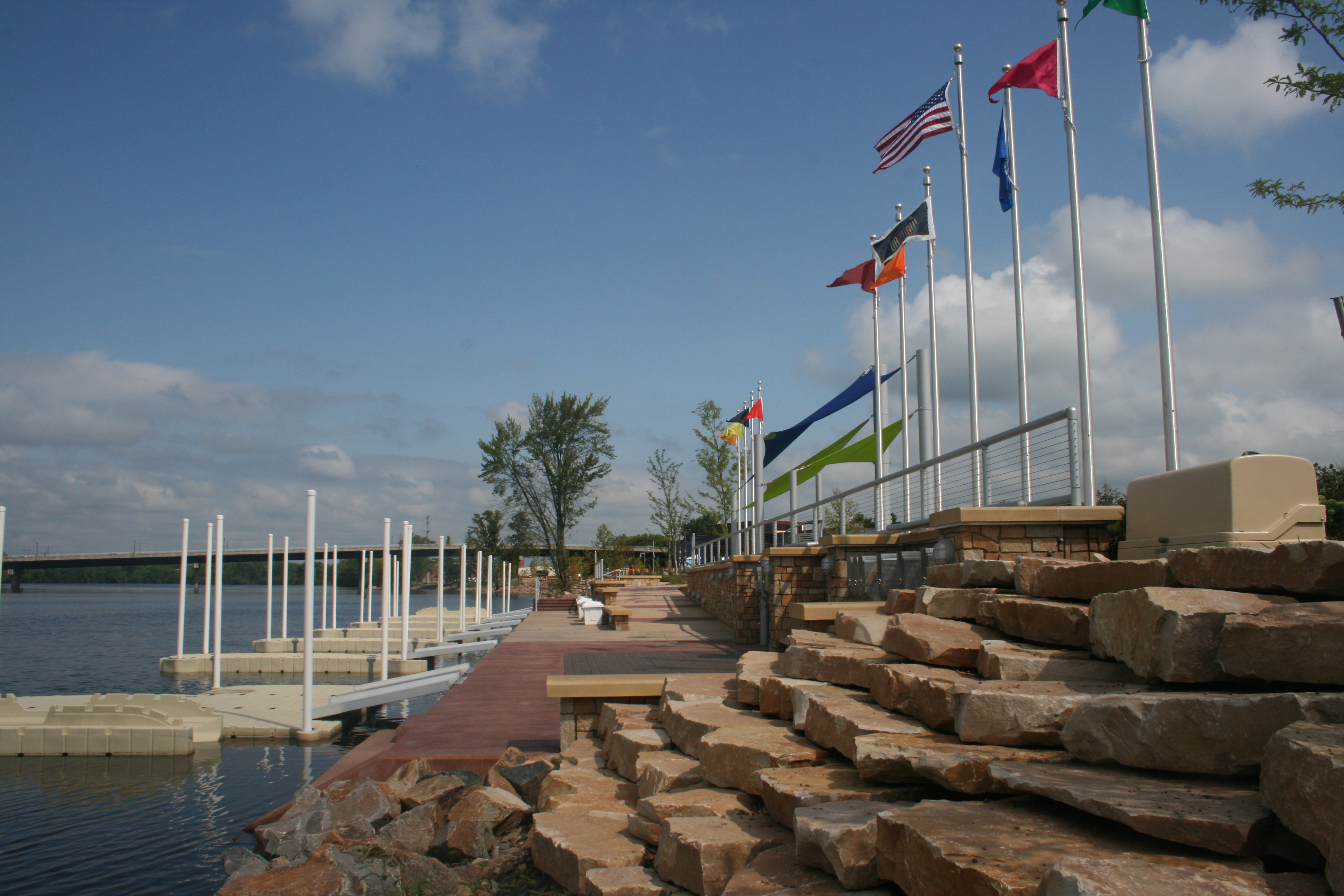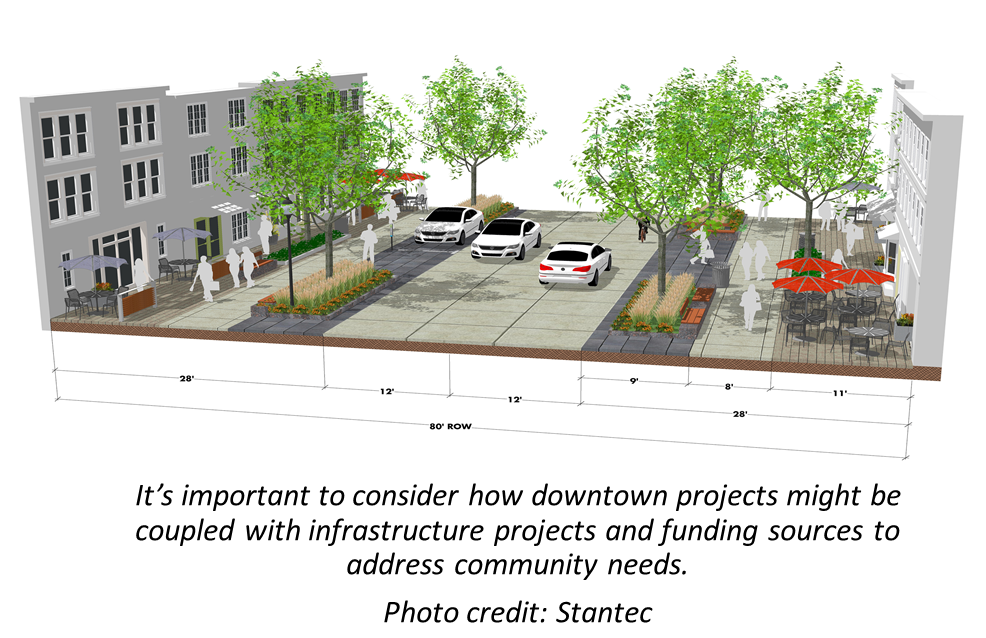October 16, 2019 | Main Spotlight: Rebuilding Main Street in Rural America: How to Engage Support, Find Funding and Build a Stronger Community | By Wendy Van Duyne, Landscape Architect at Stantec |
When the Oconomowoc Parks, Recreation & Forestry Department wanted to redesign the Fowler Lake waterfront, their goal was to make this area a downtown destination for community members and visitors alike.
Photo credit: Matt Edgar
Rural communities are stretching their budgets to accommodate critical needs, but where can they look for additional funding?
Downtowns are the lifeblood of our communities. In small towns across the country, Main Street plays a critical role in bringing residents together to shop, socialize, and share in the collective experience of living in rural America-- whether it’s over a cup of coffee at the local gas station or lunch in the café. In an increasingly digital age, downtowns play a critical role in connecting residents and creating a sense of community.
In many rural communities, it’s becoming harder to maintain a strong downtown core. Faced with out-migration of the younger generation to larger cities and ongoing competition with big-box retail establishments, communities are stretching their budgets to accommodate basic needs. This leaves little funding left over to invest in updated and new amenities that contribute to a vibrant downtown.
It’s not easy to keep up with the ever-changing world of funding, especially for smaller communities. New funding programs are popping up all the time, existing programs are being defunded, and the programs that remain are constantly changing.
For communities who are looking for funding, there are three keys to success: know your community, know your project, and know your funding agencies.
Know your community
Everything from replacing old infrastructure to revitalizing the downtown area helps build a strong community. Unfortunately, the “wish list” typically exceeds a city’s budget. To prioritize your community’s needs and wants, it’s critical to intimately know your community. You should not only look at quantitative data, but also consider the attitudes, perceptions, and needs of residents.
Main Street America’s Market Analysis Lite process is a great tool you can use to make informed decisions about your downtown, including how to effectively balance current market conditions with the desired needs of your community. It walks you through exercises and engagement techniques such as community open houses, online consumer input surveys, and business community roundtable discussions that you can use to collect qualitative and quantitative data, including:
- Consumer shopping habits and needs (when do people shop, what do they shop for?)
- Perceptions of the downtown environment (how do people feel visiting downtown—what’s good and what needs fixing?)
- Program and event outcomes (what types of activities attract more visits to downtown?)
By analyzing the data and identifying the community’s exact needs, you can more easily identify potential partners for implementation, or organizations that can provide letters of support for your funding applications. When you understand the various organizations within your city (i.e. Chamber of Commerce, Rotary, Kiwanis, workforce organizations, etc.) and their goals and missions, you can confidently propose a project that moves your community forward. 
Over the past several years, Wausau city officials worked with Stantec’s brownfield team to obtain more than $2.5 million in federal and state funding to remediate and redevelop 31 acres of vacant and contaminated riverfront parcels.
Photo credit: Stantec
Know your project
Following these exercises, you should be able to identify issues that need to be addressed such as beautification improvements (landscaping, banners, façades) public space improvements (parks, farmers markets), and parking improvements. The process of identifying these issues not only helps establish target projects, but also engages key community decision-makers in the process and builds local support. 
After you identify issues and select a project, here are a few tips to keep in mind as you develop your funding strategy:
Understand the scope. It’s important to have a deep understanding of the project at hand and know all the angles that might attract outside funding. Is there an economic-development component? Is there a hazard-mitigation element that could attract project funding? What has already been done to address the community needs and what continues to get in the way of achieving your community’s goal? Knowing this information illustrates that you have proactively tried to address the need on your own but are now at a point where outside assistance is needed. By fully understanding the scope of the project, you can identify a wider array of ways to categorize the project when looking for funding and demonstrate your due diligence.
Identify Partners. It often takes multiple players to bring a project to fruition so don’t be afraid to get creative with partnerships. Have you engaged regional development commissions, or economic development, housing redevelopment, and/or port authorities? These entities might have technical assistance or even funding programs to help advance your projects. Business associations and nonprofits may have missions that align with the goals of your project(s) and can inform the design of your project if they have needs that can be supported through the proposed improvements. Or, they may provide support to your project by providing a letter of support.
Get Creative. You should also consider if it is possible to couple a downtown beautification project with a Main Street roadway reconstruction project. Accomplishing both at once and combining available funding sources such as state-level Departments of Transportation, helps improve local infrastructure as well as the visitor experience. To make project dollars and funding sources stretch further, consider all drivers behind infrastructure projects, not just the obvious.
Know your funding agencies
Knowing what project types are eligible for which funds is important, but just because a project is eligible for funding, doesn’t mean it will compete well amongst other applying for the same funding. Demands on federal and state agency programs far outweigh the money they have available for funding awards.
It’s critical to get to know staff at funding agencies prior to a notice of funding becoming available. If possible, meet with state and federal agency staff in person. Many federal agencies have regional staff scattered across the country that are more than willing to meet with potential applicants. If travel is an issue, a phone call is the next best thing. The bottom line is you need to know what their priorities are for funding within the eligibility framework and what their hot button issues are. Multiple meetings or phone conversations may be needed for you to develop a comprehensive understanding of the funding sources, their priorities, and the timing of the programs. It also helps to know which sources can be leveraged with each other. The more you know them, and they know you, the easier it is to position yourself for success.
Funding success
Knowing your community, project, and funding agencies are key for any community to develop a sound funding strategy. Only then should you put “pen to paper” and start applying for grants and low-interest loans. It’s also important to allow for enough time. Putting together a well-rounded, successful funding package often takes 18 to 24 months. Healthy doses of perseverance, passion, and patience are invaluable.
With the right funding sources, and a collaborative approach to considering what downtown projects can accomplish, everyone can benefit. Through these efforts, small communities can not only address their downtown needs, but can also engage residents in the conversation along the way.
About the author:
Wendy Van Duyne is a Landscape Architect at Stantec with a focus on community and downtown master planning for small towns across the Great Plains. Having grown up in rural Kansas, and currently residing in Bismarck, North Dakota, Wendy has a both a passion and deep understanding of the needs of our small communities across the region. Through her work facilitating public engagement activities for downtown revitalization projects, she has come to appreciate the perspectives, work ethic, and benefits in supporting the Main Streets in towns both large and small.